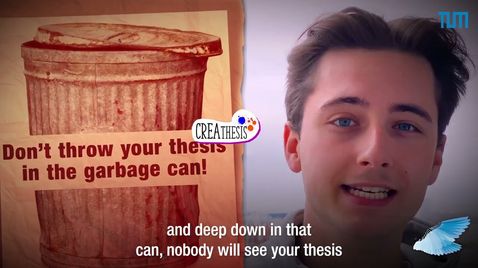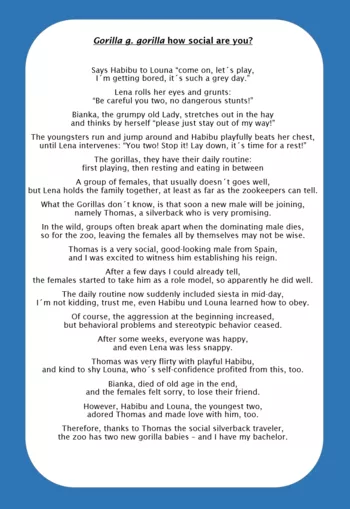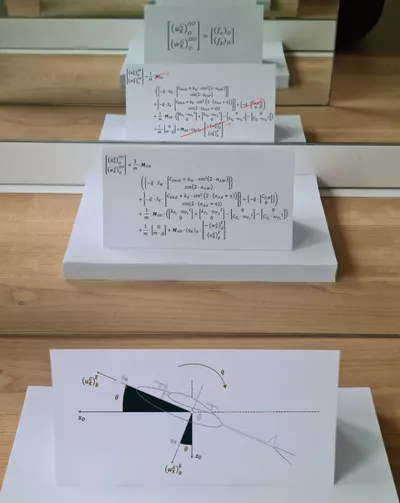CreaThesis

Our Goal
While a variety of interesting research was conducted at TUM in bachelor's, master's, and doctoral theses, it usually did not make it beyond the faculties and research groups. A contributing factor was that the ability to communicate one's own scientific research to people outside the field was usually not part of the curriculum.
With CreaThesis, we aimed to give students the opportunity to creatively elaborate on their thesis and present it on our website to arouse interest in their work and increase their own ability to communicate scientific topics.
Project
Results
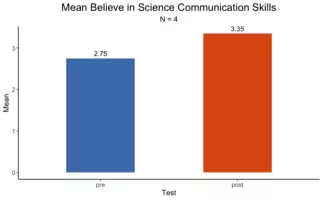
During the project, we launched our own website, where several CreaTheses provided insights into a wide range of scientific topics. These CreaTheses are presented below.
Although the number of participants was not sufficient for the results to be significant, we detected a trend that participants perceived their science communication skills to be improved just by creating their own CreaThesis (cf. Figure 1).
For a more detailed discussion of the project and its results, the team's Research Report can be consulted.
Final Remarks
The scientific part of the project was completed and the final project was presented at the Symposium on 2nd of July. Here you could find a short video shown during the event that summarized our overall vision for the project.
If you are interested in the CreaTheses created during the project you can find them in the gallery below.
Towards a Universal Machine Learning Interatomic Potential for the x Li2S –(100-x) P2S5 Material Class
CreaThesis by Tabea Huss
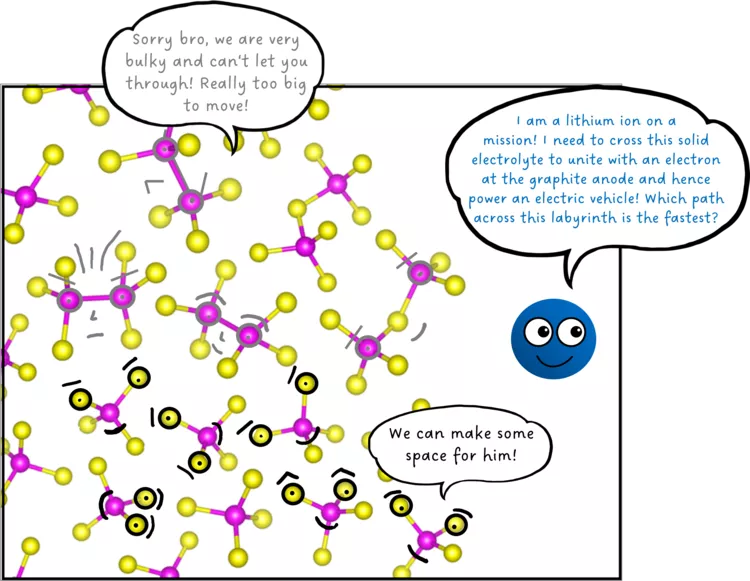
Simplified Abstract: Lithium-ion batteries are so abundant in our daily life, that it is very difficult to imagine a world without them. All portable electric devices are powered by them, and they are by far the most promising technology for the future of automotive mobility. Particularly solid electrolytes are highly investigated in literature right now, as they are inflammable and the battery thus less prone to explosion. Currently, a quest for the best solid electrolyte, which most importantly needs to have a high lithium-ion conductivity, takes place in science. Lithium thiophosphates are a promising material class, containing cheap and earth-abundant materials.
The Integration of a new silverback male into a group of female gorillas
CreaThesis by Annika Neuhaus
Simplified Abstract: In this study, I observed the integration of a new silverback into a four-member female group of the western lowland Gorilla (Gorilla gorilla gorilla) in the Nuremberg Zoo. I paid attention particularly to the changing daily rhythms and behavior, as well as the aggression of single individuals and the overall aggression of the group. On 37 days, for 8 hours each, I noted every three minutes, where in the enclosure the five gorillas (i.e., Lena, Bianka, Habibu, Louna and Thomas) were and what behavior they showed. I categorized behavior into several different groups such as staying by oneself, locomotion, playing, sexual behavior, aggressive behavior, social behavior, problematic/stereotypic behavior, and feeding. The daily rhythm and the percentage of categorized behaviors shifted after the arrival of the male gorilla. The group regained a stable rhythm in the later phases, but it differed from that at the beginning of the observation. The frequency of aggression and dominance increased in the group after the introduction of the male. The group structure changed such that Lena gave her leadership to Thomas and Louna chose this older female instead of Bianka as reference animal. Aggression among females dropped once the silverback joined the group and their cohesion increased. The goal was to document the response of the animals during the introduction, to broaden the experience with these highly social animals.
| Name: Annika Neuhaus | Field of Study: Biology |
Sensory-processing sensitivity – a possible predictor for shooting performance and state orientation? An investigation of the influence of sensitivity on shooting performance and personality variables
CreaThesis by Andrea Schittenhelm

Simplified Abstract: Aim of the bachelor thesis was to investigate if sensory-processing sensitivity could have a disadvantage or an advantage in sport shooting performance. Additionally, the study did also investigate if sensory-processing sensitivity may have a correlation with the personality variable state orientation. To evaluate these questions, an online survey with the German version of the Highly Sensitive Person Scale (HSPS-GS), as well as the German version of the Action Control Scale (HOSP) was conducted. Results revealed differences in sensitivity between high-performer and low-performer in shooting sports for men (p = .019, d = .26) but not for women (p = .864, d = -.02). Striking was that in the study sample included distinctly less persons that reached the high scorers on the HSPS-GS, than described in the literature. This means, that there were almost no highly sensitive persons in the shooting sample. A moderate correlation between sensitivity and state orientation was found. These results, especially the absence of high scorers, is perhaps an indicator for high sensitivity as a possible disadvantage in competitive shooting sports.
| Name: Andrea Schittenhelm | Field of Study: Sport Science |
| Supervisor: Prof. Dr. Jürgen Beckmann | Chair: Chair of Sport Psychology |
The role of Stearoyl-CoA desaturase-1 (SCD1) and Glutathione Peroxidase 8 (GPX8) in Lipotoxicity
CreaThesis by Philipp Strobl

Simplified Abstract: The aim of my thesis was to investigate the role of two enzymes in a process called lipotoxicity. Lipotoxicity is a metabolic syndrome in which high concentrations of free fatty acids lead to cell dysfunction and subsequent cell death. However, how these free fatty acids trigger this cytotoxicity is not yet fully understood.
One of the enzymes studied in this thesis (SCD1) is necessary for the conversion of saturated to unsaturated fatty acids, the other (GPX8) is thought to play a role in maintaining a healthy environment in the cell. To understand the role of these enzymes in lipotoxicity in more detail, they were made non-functional in cultured mouse cells by a so-called “knockout”. The subsequent treatment of these cells with fatty acids and the analysis of the following cell reactions should provide information about their role in lipotoxicity.
This work demonstrated that both GPX8 and SCD1 play a major role in protection against lipotoxicity. It could be shown that cell death in mouse cells could be induced by the addition of elevated concentrations of saturated fatty acids but could be prevented by the simultaneous addition of unsaturated fatty acids. The “knockout” of the two enzymes led to cell death at significantly lower concentrations of saturated fatty acids. By analyzing different cellular pathways, answers could be found how this lipotoxicity protection is ensured by the enzymes.
| Name: Philipp Strobl | Field of Study: Biology |
| Supervisor: Dr. Marcus Conrad | Chair: Helmholtz-Zentrum München |
Research to improve the quality of proso millet malt for the brewing process OR How to make beer from proso millet malt
CreaThesis by Magdalena Bader
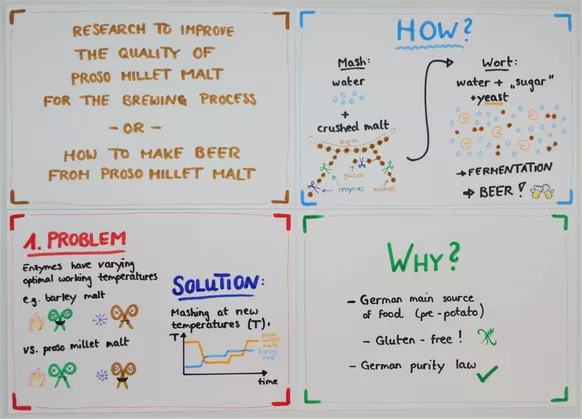
My CreaThesis starts with a general overwiew of the brewing process. The actual process is way more complex, but those are the most important steps. Crushed malt is mixed with water and held at several temperatures between round about 50 to 80 °C (depending on the specific procedure and the raw materials). During those rests, enzymes from the malt are degrading several ingredients of the malt, including starch and protein. The starch is broken down into fermentable sugars such as glucose and maltose, which will later be metabolized by the yeast. The mash is separated into solid particles and the remaining liquid which is called wort. The wort is boiled and cooled, and the yeast is added. The yeast ferments the sugars and produces mostly ethanol and carbon dioxide. Now comes the interesting part and simultaneously the problem I tried to tackle in my thesis: Brewers found out that you cannot just use any raw material in the process that is designed for using barley malt. Brewing with proso millet malt for example will lead to nearly no enzymatic degradation of the starch, which will of course lead to a poor fermentation performance and a bad beer. I found out that this is because the optimal working temperatures of enzymes from barley malt and from proso millet malt differ drastically – some from barley malt like it colder, while the same enzymes from proso millet malt like a higher temperature. So, my solution was to adapt the mashing procedure which is designed for barley malt to the temperatures I found in proso millet malt. And it worked! I tried the new procedure out and the results were very promising. But now you might wonder why this is important. We already have a raw material which is almost perfect for brewing beer – barley malt. The problem with barley is that it contains gluten, so people who are allergic to that cannot consume beer made from barley malt. Proso millet is gluten-free – and therefore perfect for brewing gluten-free beer. Also, it is a raw material that you can use in Germany, where the strict regulations of the German purity law apply.
Simplified Abstract: Since the number of celiac disease cases rises globally, the demand for gluten-free beers with proso millet malt as the main ingredient also increases. Yet the problem with proso millet malt is that the wort (= “beer before fermentation”) is lacking quality when being processed the usual way in the brewery. These low-quality worts cause major microbiological and technological problems throughout the whole production process. Therefore, the production of the wort, which is called mashing, needs to be adjusted. During the mashing crushed malt is mixed with water and this mixture is then heated to different temperatures (e.g. 50 to 78 °C for barley malt). There are several temperature rests during which the enzymes in the mash are degrading the malt ingredients (starch, proteins etc.). The most important enzymatic degradation is the breakdown of starch into fermentable sugars. It is very important that the rests are being held at special temperatures, since every enzyme has its optimal working temperature.
In my thesis I found out that the optimal working temperatures of proso millet malt enzymes differ strongly from the ones found in barley malt. Therefore, brewing with proso millet malt requires a mashing procedure especially designed for this special raw material. With my findings about the ideal malting conditions for proso millet and about the special enzyme characteristics of proso millet malt I designed such a mashing procedure. With this adapted process, producing a high-quality wort with proso millet malt was finally achieved. The satisfactory wort test results lead to the conclusion that proso millet is a suitable gluten-free raw material for the brewing process.
From archaeal to eucaryotic proteasomes: Biochemical and structural studies on assembly intermediates and proteasomes with intermediate complexity
CreaThesis by Theresa Franz
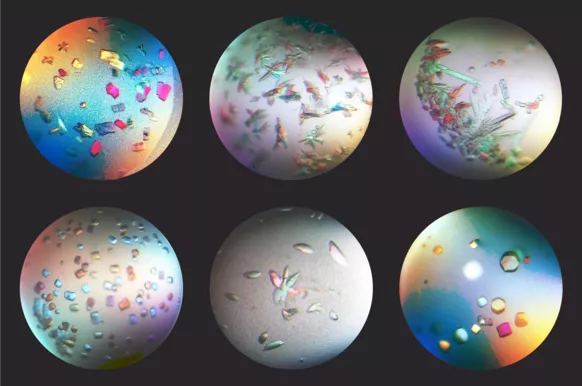
Simplified Abstract: In this thesis, proteasomes – enzymes that break down proteins in the body – were studied. For this purpose, different mutations were introduced into the proteins that form the proteasomes, and their effects on function and structure were analyzed. To this end, the proteins were first produced in bacteria and then purified to obtain the desired protein in such a high concentration that it formed crystals under certain conditions.
This way, it was possible to determine which mutations reduced the activity of the proteasomes strongly and thus which residues or amino acids are particularly important for the ability of the proteasome to cleave proteins. We also tested which conditions (buffer, pH, protein concentrations, etc.) led to favorable results during purification and crystallization for all the individual proteins and which proteins were not capable of forming crystals on their own.
| Name: Theresa Franz | Field of Study: Biochemistry |
| Supervisor: Dr. Eva Huber | Chair: Chair of Biochemistry |
Physical Unclonable Functions (PUFs)
CreaThesis by Veronika Bauer
Simplified Abstract: A PUF, short for physical unclonable function, is an object containing an internally disordered structure either by default or by design. Various objects contain internal disorder in their nanoscale structure like the fibers of a piece of paper, slight manufacturing differences on computer chips or even the structured surface of a wall. Each piece is unique and cannot be physically cloned, not even by its manufacturer. While these slight differences are often seen as a nuisance, these can be exploited for IT Security purposes. If an external stimulus is introduced to such an object, e.g. a laser beam to a transparent object, it reacts in a unique way, e.g. by creating a speckle pattern. If the angle of the laser beam or its position are changed, different pattern emerge. Thus, various stimuli, called challenges, can be used to create different outputs, referred to as responses. If the same challenge is introduced to such a PUF, the same response is outputted all the time, whereas changes within the PUF or the use of a different PUF lead to a different response. Hence, knowing this unique challenge-response behavior, one is able to identify the PUF and detect changes within the PUF. This feature can be exploited for various cryptographic protocols like authentication purposes. Image you know that your best friend owns a PUF and you know how this PUF behaves when a laser beam lights this PUF. Then, you are able to identify your best friend by just examining the PUF’s behavior. Thus, this PUF can be seen as a secure tag or label. This technique can be used to counterfeit pirated products like medicine by placing a PUF on the packaging. Forgers are not able to physically clone this PUF which is why, e.g. a pharmacy is able to check the product’s authenticity.
| Name: Veronika Bauer | Field of Study: Informatics |
| Supervisor: Prof. Dr. Dieter Kranzlmüller, Prof. Dr. Dr. Ulrich Rührmair, M.Sc. Steffen Illium | Chair: Institute of Informatics LMU Munich |
Flight control equations in a simple way
CreaThesis by Nico Michel
Simplified Abstract: The task of the thesis was to investigate the influence of nonlinear coupling effects on the longitudinal flight dynamics of a Vertical Take-Off and Landing Vehicle (VTOL), a special type of drone. During flight tests, my supervisors project group discovered undesired flight behavior of their real existing VTOL, which did not appear in the full scale, multi degree of freedom simulation model. To examine the correlations between the different actuators, my task was to create a simplified model of the longitudinal dynamics of the VTOL, control it with the applied control algorithm and try to find out the connections that cause the undesired flight behavior. The big aim was to implement counter measures to improve the flight behavior and supply it to the project groups model.
| Name: Nico Michel | Field of Study: Mechanical Engineering/ Aerospace |
| Supervisor: Prof. Holzapfel | Chair: Institute of Flight System Dynamics |
Optimization of the weight distribution of VbS modules on the aCar
CreaThesis by Dominik Wernberger

Simplified Abstract: My Bachelor Thesis described influencing and limiting factors for the weight distribution of the aCar. The aCar mobility project is a project of FTM (Institute of Automotive Technology TUM) that develops use cases for a small battery-electric pickup truck (BEV) with focus on mobility in Sub-Saharan Africa. Being battery-powered and therefore able to deliver electric power everywhere gives many new possibilities of usage.
I considered surrounding conditions like maximum slopes and weight of the driver and a possible trailer and the boundaries the manufacturer of the vehicle sets on axle loads etc. This ended up in a model you can feed with basic vehicle data and the weight and position of objects you want to load to the vehicle. As a result you get exceedances of limit values. Moreover the thesis examined how additional load influences the BEVs range and considered possibilities to install a mounting rack on the vehicle. This work feeds into the development of modules like a mobile clinic and many other vehicle-based services (VbS) to be developed based on the aCar as a multi-functional vehicle.
Material properties of copper
CreaThesis by Matthias Haar
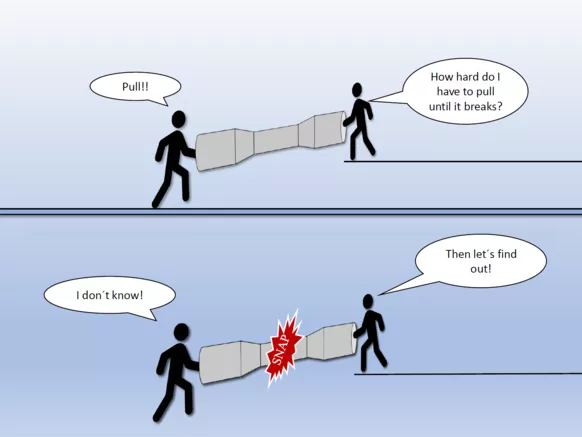
Simplified Abstract: For selective laser beam melting (a form of so–called 3D printing) the mechanical properties of printed components for pure copper are not known so far. However, through tensile teststhe determination of tensile strength and elongation behavior of copper is possible. Therefore, the goal of my master Thesis was i) to find suitable combinations of parameters to produce standardized 3D printed copper sticks which could be used in tension tests and ii) to determine the traction force at which the copper stick would break.
First, the tensile samples had to meet certain requirements such as an optimal shape and density to obtain meaningful results. For example, the density had to reach a minimum value of 99.5% which means that the copper stick had to be of 99.5% pure copper. Furthermore, the copper sticks had to be homogenous without any air inclusions and be free from visible flaws.
To achieve my goals, I printed the copper samples with a 3D machine which turned out to be the real difficulty within my master Thesis. Under the given conditions it was almost impossible to produce good samples. Hence, I wasn ́t able to complete the first step and unfortunately couldn ́t measure the tension needed to break my samples. Research is not always easy and sometimes you have to take one step back. In my case this means that still a lot of research must be conducted on 3D printing of pure copper before using 3D printed copper in electronics or other industrial products.
Team
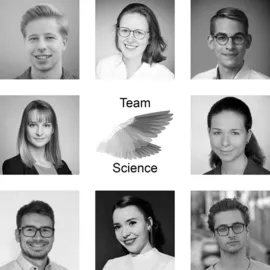
Alix Bertrand (TUM MED)
Marlon Demandt (TUM Gov)
Theresa Franz (TUM MED)
Anita Kolmann (TUM SoM)
Nico Michel (Mechanical Engineering)
Andrea Schittenhelm (Sports- and Health science)
Philipp Strobl (TUM Life Science)
Tobias Tiemeier (TUM SoM)
Tutors
Sebastian Kaltenbach (Mechanical Engineering)
Maximilian Wagner (TUM Gov)

